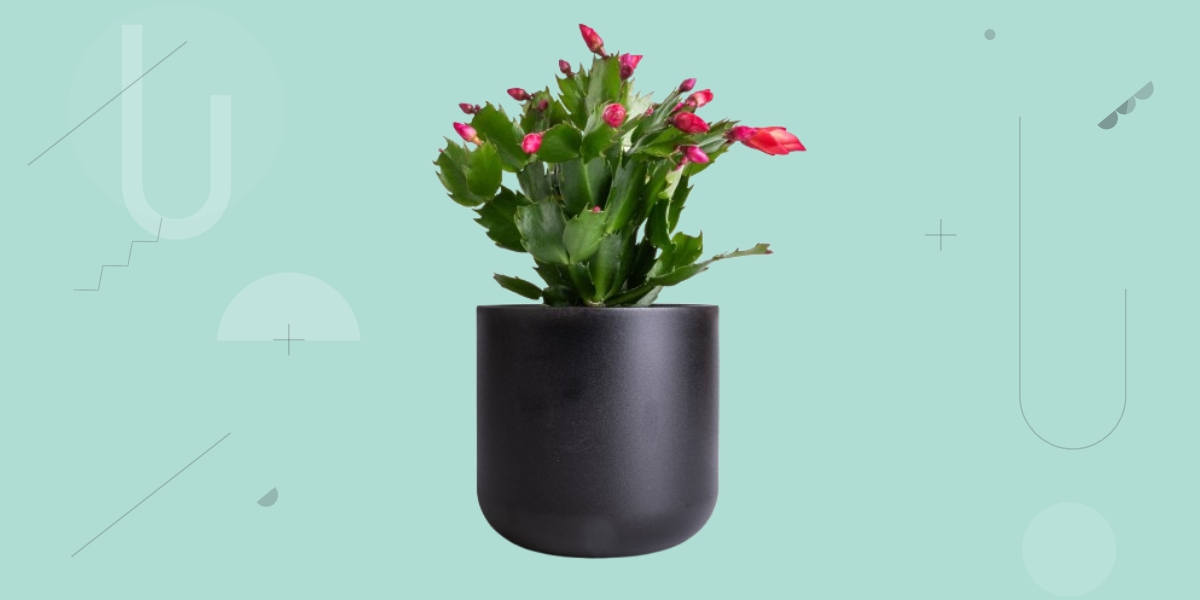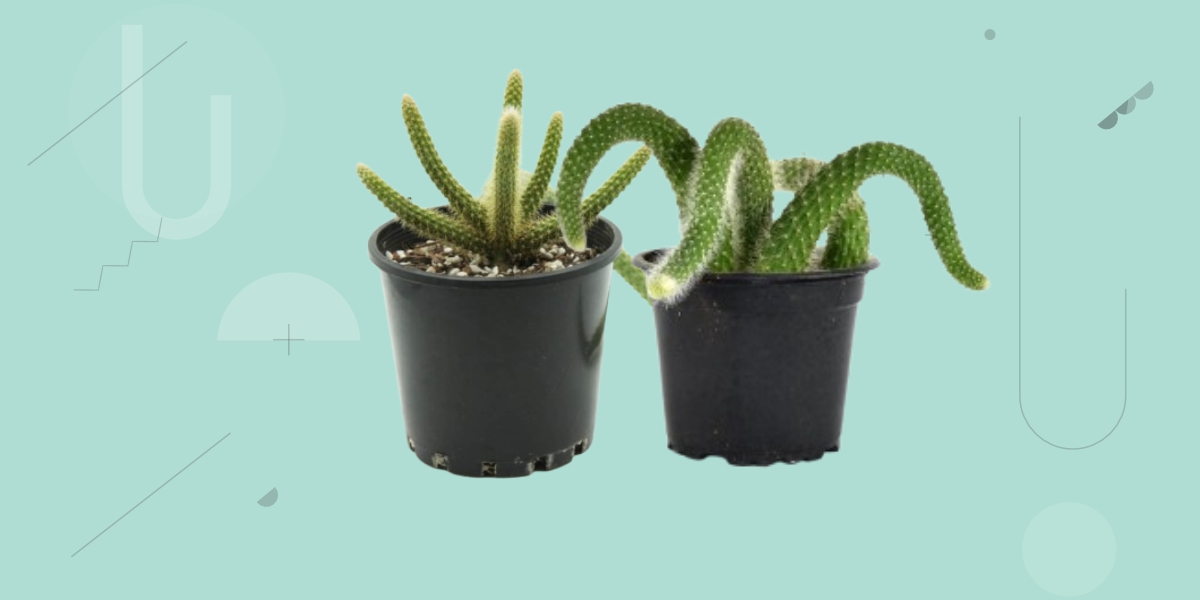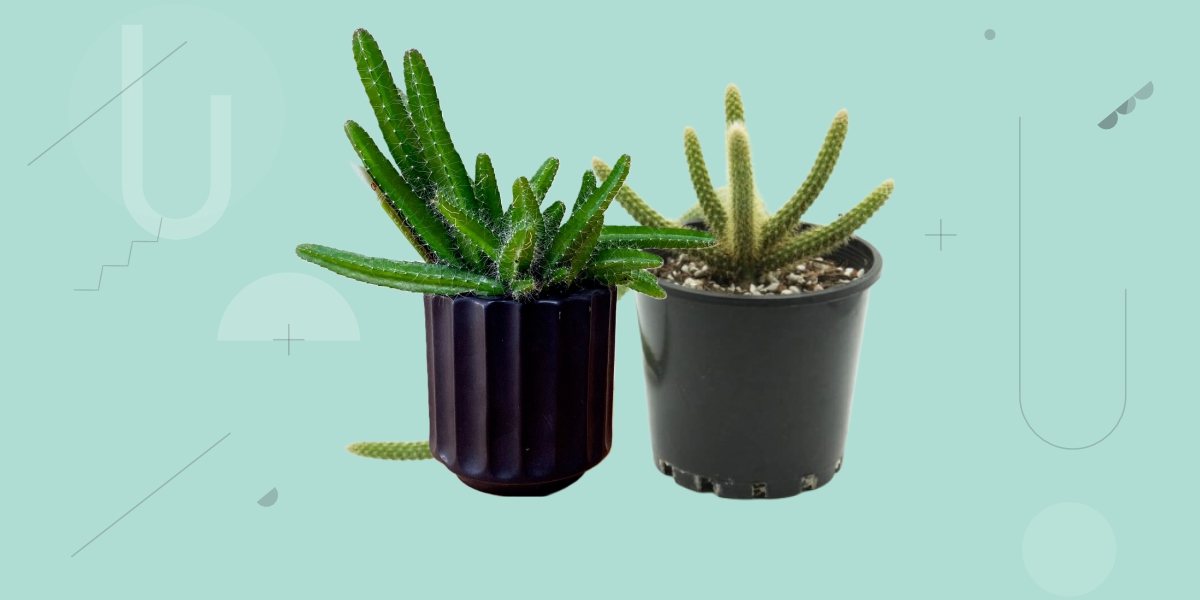Whether you’re a beginner looking to add a low-maintenance plant to your collection or an experienced gardener seeking tips for optimal growth, this guide covers everything you need to know to keep your Monkey Tail Cactus thriving. From watering and light requirements to potting tips and common challenges, discover how to care for this fascinating cactus easily.
Monkey Tail Cactus
The Monkey Tail Cactus, scientifically known as “Cleistocactus colademononis,” is a unique and intriguing species of cactus that captivates enthusiasts with its distinctive appearance (1).
Native to the mountainous regions of Bolivia, this cactus is named for its long, trailing stems covered in soft, white, hair-like spines resembling a monkey’s tail.
Here is a table summarizing the key features of the Monkey Tail Cactus:
| Native Region | Bolivia |
| Bloom Time | Spring |
| Light | Full, Partial |
| Watering | Water thoroughly when soil is dry; more frequent watering in spring/summer, reduced in fall/winter |
| Soil | Well-draining cactus or succulent soil, ideally with sand, perlite, or pumice |
| Soil pH | Acid, Neutral, Alkaline |
| Temperature | Prefers 10-30°C (50-86°F); not frost-tolerant |
| Hardiness Zone | 9-11 (USDA) |
Monkey Tail Cactus Care Guide
The Monkey Tail Cactus is a captivating species appreciated for its long, trailing stems covered in soft, white, hair-like spines. To ensure your Monkey Tail Cactus thrives, follow this comprehensive care guide.
Soil
- Combine 50% cactus potting mix, 25% perlite, 15% coarse sand, and 10% pumice or grit.
- Ensure the mix is light and well-draining for optimal cactus health.
Temperature
- Prefers temperatures between 10-30°C (50-86°F).
- Not frost-tolerant; protect from freezing temperatures.
Humidity
- Monkey Tail Cactus thrives in low to moderate humidity, ideally between 30-50%.
- Avoid high humidity levels to prevent root rot and fungal issues.
Light
- Thrives in bright, indirect light.
- Can tolerate some direct sunlight but avoid intense midday sun to prevent scorching.
Water
- Water thoroughly when the soil is dry to the touch.
- Increase watering frequency during the growing season (spring and summer).
- Reduce watering significantly during the dormant period (fall and winter).
Fertilizer
- Use a balanced cactus fertilizer during the growing season to encourage healthy growth and flowering.
- Avoid fertilizing during the dormant period.
Monkey Tail Cactus Care Indoor vs. Outdoor
The Monkey Tail Cactus is a versatile and resilient plant that can thrive both indoors and outdoors with the proper care. Below is a detailed guide on how to care for your Monkey Tail Cactus in different environments.
Here’s a table summarizing the differences in Monkey Tail Cactus care for indoor and outdoor settings:
| Aspect | Indoor Care | Outdoor Care |
| Soil | Mix 2 parts cactus or succulent soil with 1 part sand and 1 part perlite or pumice. | For every three parts of garden soil, amend it with 1 part sand and 1 part perlite or pumice. |
| Temperature | Keep temperatures between 10-30°C (50-86°F). Protect from drafts and sudden temperature changes. | Ensure temperatures remain between 10-30°C (50-86°F). Bring indoors if temperatures drop below freezing. |
| Humidity | Ideal humidity between 30 to 40 percent (2) | Ideal humidity between 30 to 40 percent |
| Light | Bright, indirect light. Tolerates some direct sunlight but avoid intense midday sun. | Bright, indirect light. It can handle more direct sunlight but shade during the hottest parts of the day to prevent sunburn. |
| Water | Water thoroughly when the soil is dry. Water more frequently during the growing season (spring and summer), and reduce watering in the fall and winter. | Water thoroughly when the soil is dry. Depending on the climate, it may need more frequent watering. Reduce watering during rainy seasons to prevent root rot. |
| Fertilizer | Balanced cactus fertilizer during the growing season. Do not fertilize during the dormant period. | Balanced cactus fertilizer during the growing season. Reduce or stop fertilizing in the fall and winter. |
| Placement | Ideal for hanging baskets or elevated planters to allow the stems to trail down. | Suitable for hanging baskets, rock gardens, or elevated planters where the stems can trail down. Ensure a sheltered spot if the climate is extreme. |
| Pest Control | You might have to deal with pests like spider mites or mealybugs. Regularly inspect the plant and use appropriate treatments if pests are found. | Pests like aphids, snails, or slugs could be a problem. Natural predators can help control pest populations, but you might need to take additional measures if infestations occur. |
| Growth Monitoring | Monitor the growth of the cactus and rotate the plant occasionally to ensure even light exposure. Prune if necessary to maintain shape and health. | Monitor the plant for signs of stress due to environmental factors. Adjust watering, light exposure, or location as needed to ensure healthy growth. |
How to Propagate Monkey Tail Plants?
Monkey Tail Cactus is a prolific grower and can be easily multiplied through several methods. Here’s a breakdown of the most common propagation techniques:
1. Propagation by Stem Cuttings
This is the most popular and successful method. Here’s how to do it:
- Use a sterile knife or shears to take a healthy stem cutting, ideally 4-6 inches long.
- Allow the cut end to dry and callous over for a few days in a cool, dry place.
- Prepare a pot with well-draining cactus mix.
- Plant the calloused end of the cutting about an inch deep in the soil.
- Water lightly and avoid overwatering until roots are established.
- New growth should appear in a few weeks.
2. Propagation by Division (for Pups)
This method works well if your Monkey Tail Cactus has formed pups (small offsets) at the base. Here’s how to do it:
- Carefully remove the pup from the mother plant using a sterile knife.
- Ensure the pup has some roots attached.
- Pot the pup in a well-draining cactus mix.
- Water lightly and care for it like a mature Monkey Tail Cactus.
3. Propagation by Layering (advanced)
This method takes longer but can be rewarding. Here’s how to do it:
- Choose a healthy, long stem on the mother plant.
- Make a shallow cut halfway through the stem without severing it completely.
- Prop the wounded area open with a toothpick or small pebble.
- Apply moist sphagnum moss around the wound and secure it with plastic wrap.
- Keep the moss consistently moist. Roots should develop at the wound site within a few weeks.
- Once roots are established, you can cut the stem below the rooted area and pot the newly formed plant.
How to Grow Monkey Tail Plants From Seed?
While propagating Monkey Tail Cactus through seeds is possible, it’s considered a more challenging method than stem cuttings or division. Here’s what you need to know for planting instructions and care of monkey tail cactus:
Materials Needed
- Monkey Tail Cactus seeds
- Well-draining cactus or succulent soil mix
- Small pots or seed trays
- Clear plastic wrap or a humidity dome
- Grow lights or a bright, sunny location
- Spray bottle for misting
Step 1: Prepare the Soil:
Fill small pots or seed trays with well-draining cactus or succulent soil mix. Ensure the soil is slightly moist but not soggy.
Step 2: Sow the Seeds:
Gently sprinkle the Monkey Tail Cactus seeds over the soil surface. Do not bury the seeds deeply; they should be lightly pressed into the soil.
Step 3: Cover the Seeds:
Cover the pots or trays with a thin layer of fine sand or grit to help anchor the seeds and retain moisture.
Step 4: Create Humidity:
Place the pots or trays in a clear plastic bag or cover them with clear plastic wrap to create a mini greenhouse effect. This helps to maintain humidity around the seeds.
Step 5: Provide Light:
Place the pots or trays in a bright, indirect light location or under grow lights. Avoid direct sunlight, as it can overheat and damage the seeds.
Step 6: Maintain Moisture:
Check the soil moisture regularly and mist lightly with a spray bottle to keep the soil slightly moist. Avoid overwatering, as this can lead to rot.
Step 7: Germination:
Seeds typically germinate within 2-8 weeks, depending on temperature and conditions. Be patient, as cacti seeds can take time to sprout.
Step 8: Transplanting:
Once seedlings have developed several sets of true leaves and are large enough to handle, transplant them into individual pots with well-draining soil.
Step 9: Care for Seedlings:
As the seedlings grow, continue to provide bright light and moderate watering. Gradually acclimate them to normal indoor or outdoor conditions.
Step 10: Growth and Maintenance:
Monkey Tail Cactus seedlings grow slowly. As they mature, continue to provide bright light, proper watering (allow soil to dry slightly between waterings), and occasional feeding with a diluted cactus fertilizer during the growing season.
Growing Monkey Tail Cacti from seed requires patience and attention to detail, but propagating these unique and charming cacti can be rewarding.
Potting and Repotting Monkey Tail Cactus
Potting and repotting your Monkey Tail Cactus is crucial for its health and growth, ensuring proper drainage and space for root development. Here’s a guide on choosing the right pot and how to repot your cactus:
How to Choose the Right Pot
Choosing the right pot for your Monkey Tail Cactus involves several important considerations to promote healthy growth and ensure optimal care. Here’s a concise guide in bullet points:
- Size: Choose a pot that allows the cactus roots room to grow comfortably, typically 1-2 inches wider in diameter than its current pot.
- Material: Opt for terracotta for good airflow and drainage, ceramic for insulation and design variety, or plastic with drainage holes for lightweight convenience.
- Drainage: Ensure the pot has drainage holes to prevent waterlogging and use a saucer to catch excess water.
- Aesthetic: Select a pot that complements your decor, considering color, texture, and design.
- Practical Tips: Consider the pot’s weight for mobility stability for taller plants, and match pot size to soil volume when repotting for optimal root health.
How to Repot Monkey Tail Cactus
Repotting your Monkey Tail Cactus is essential for its continued health and growth. Here’s a straightforward guide on how to repot your cactus:
- Timing: Repot your cactus every 2-3 years or when it outgrows its current pot. Spring or early summer is ideal when the plant is actively growing.
- Prepare the New Pot: Select a pot slightly larger in diameter than the current one and with drainage holes. Fill it with fresh cactus or succulent soil mix, leaving enough space for the cactus to sit at the same depth as before.
- Remove the Cactus: Carefully tip the cactus out of its current pot. If the cactus is stuck, gently tap the sides or use a blunt tool to loosen the soil around the edges.
- Inspect Roots: Check the roots for any signs of rot or damage. Trim off any unhealthy roots with clean, sharp scissors or pruning shears.
- Repotting: Place the cactus into the new pot, adjusting its position so it sits at the same depth. Fill in around the roots with the fresh soil mix, pressing lightly to secure the plant.
- Watering: Wait a few days after repotting before watering to allow any root disturbances to heal. After this period, resume regular watering habits, ensuring the soil is moist but not soggy.
- Aftercare: Place the repotted cactus in a location with bright, indirect light. Avoid direct sunlight for a few days to prevent sunburn while the plant adjusts to its new pot.
How to Get Monkey Tail Plants to Bloom?
Getting your Monkey Tail Cactus to bloom requires providing optimal growing conditions and occasionally stimulating the plant. Here are some tips to encourage blooming:
Essential Conditions:
- Light: Monkey Tail Cactus needs plenty of bright, indirect sunlight to trigger flower production. Aim for at least 6-8 hours of bright light daily. Avoid harsh afternoon sun, which can scorch the plant.
- Maturity: Younger plants generally only flower once they reach a certain level of maturity. Be patient – it can take 2-3 years or even longer for a young cactus to bloom for the first time.
- Winter Dormancy: A cool, dry winter dormancy period is crucial for stimulating flower bud formation. Reduce watering significantly during winter and keep the temperature slightly cooler (around 55-60°F/13-15°C) if possible. However, avoid freezing temperatures.
- Fertilization: While not strictly necessary, a light feeding with a high-phosphorus fertilizer during the growing season (spring and summer) can sometimes promote blooming. Opt for a diluted solution and avoid over-fertilizing.
- Pot Size: A pot that’s too large can lead to excessive foliage growth at the expense of flowers. Ensure the pot is only slightly larger than the root ball.
- Stress: Avoid stressing your cactus with frequent repotting, underwatering, or harsh environmental changes. A healthy and happy plant is more likely to bloom.
Pests and Problems With Monkey Tail Plants
Monkey Tail Cacti are generally resilient plants but occasionally encounter pests and problems. Here are some common issues to watch for and how to address them:
- Spider Mites: These tiny pests can infest cacti, causing stippling or webbing on the plant. To control spider mites, rinse the cactus with water or use insecticidal soap according to the product instructions. Increase humidity around the plant to discourage further infestation.
- Mealybugs: Mealybugs appear as white, cottony masses on stems and joints, sucking sap from the plant. Remove mealybugs with a cotton swab dipped in rubbing alcohol, or use insecticidal soap. Inspect the plant regularly for signs of recurrence.
- Root Rot: Overwatering or poor drainage can lead to root rot, characterized by soft, discolored roots and wilting stems. To prevent root rot, ensure the cactus is planted in well-draining soil and allow the soil to dry out between waterings. Trim affected roots and repot in fresh soil if necessary.
- Sunburn: Excessive exposure to direct sunlight, especially during hot summer months, can cause sunburn on cactus stems. To prevent further damage, move the plant to a location with bright, indirect light and gradually introduce it to more sunlight over time.
- Fungal Diseases: Wet and humid conditions can promote fungal diseases such as powdery mildew or fungal spots on cactus stems. Improve air circulation around the plant and avoid overhead watering. Treat fungal infections with fungicidal sprays as recommended.
- Stem Rot: Stem rot can occur if water collects in the cactus stem joints or if the plant is subjected to prolonged damp conditions. To prevent the spread of rot, cut off affected stems with a sterile knife and adjust watering practices to prevent moisture buildup.
- Pest Prevention: Regularly inspect your Monkey Tail Cactus for signs of pests and promptly treat any infestations. Maintain good hygiene by removing debris and fallen leaves around the plant to discourage pests and fungal diseases.
Conclusion
Caring for a Monkey Tail Cactus can be a rewarding experience. It adds beauty and character to any indoor or outdoor space. By following these simple guidelines, you can ensure your cactus remains healthy and vibrant year-round.
Remember to provide adequate light and water sparingly, choose the right potting environment, and watch for common pests and issues.

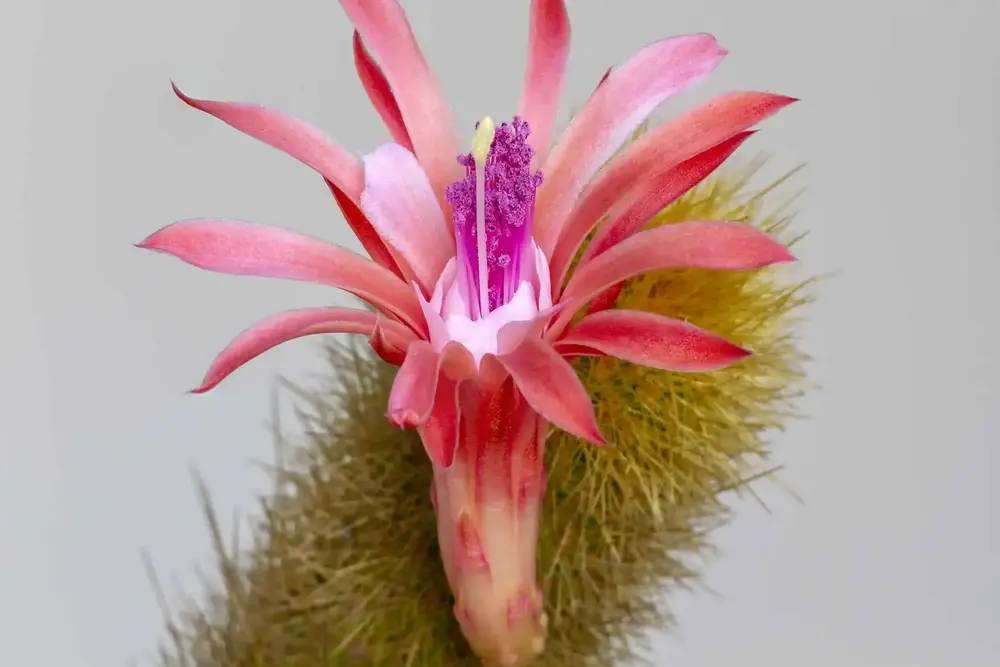
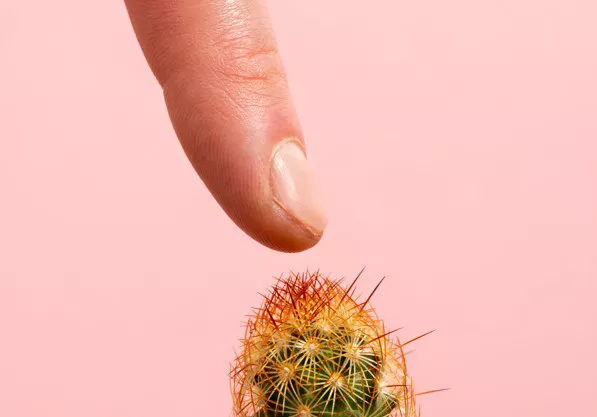
![Types of Rat Tail Cactus Differences and Similarities [With Pictures]](https://cactusology.com/wp-content/uploads/2025/04/Types-of-Rat-Tail-Cactus-Differences-and-Similarities-With-Pictures.jpg)
